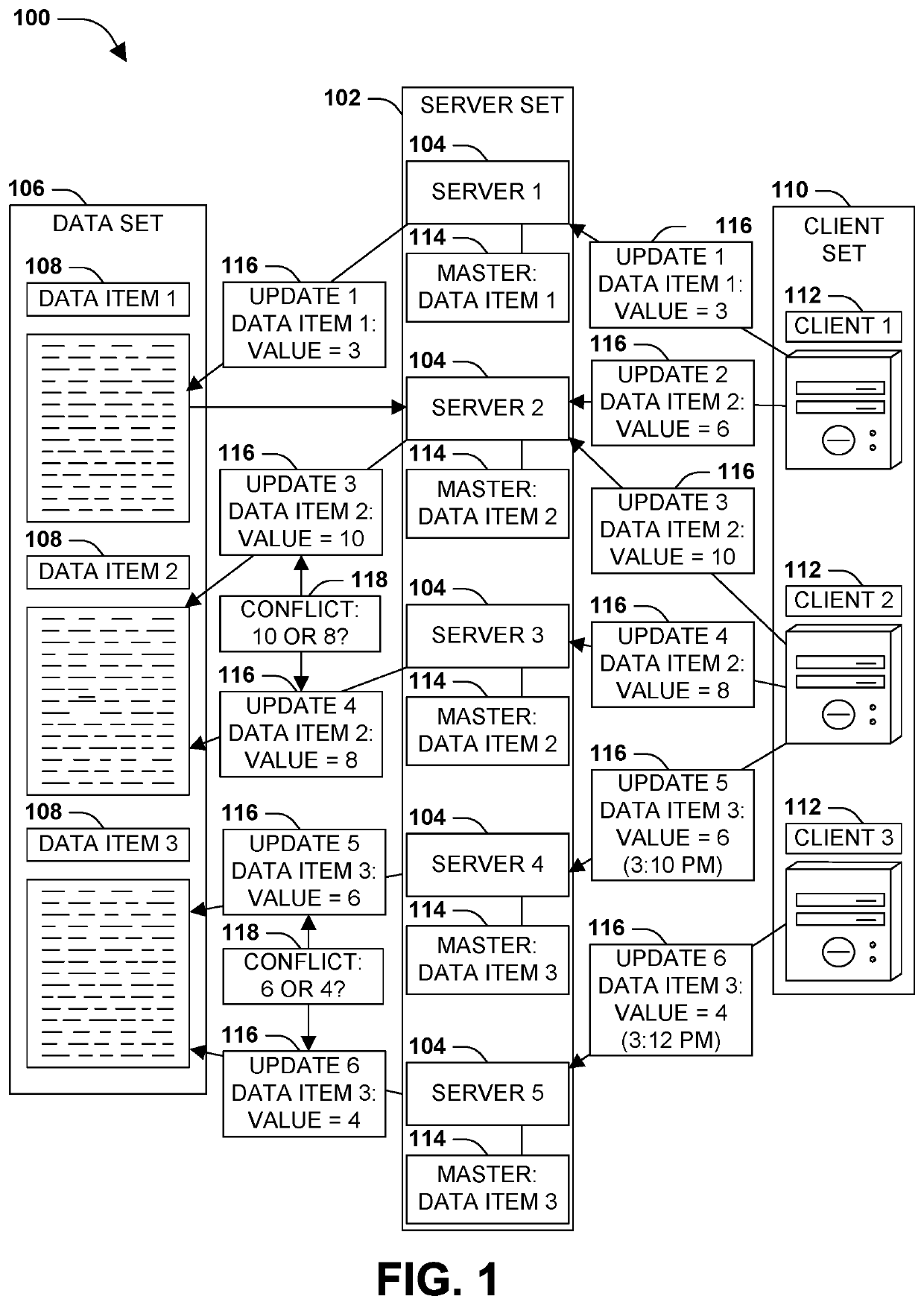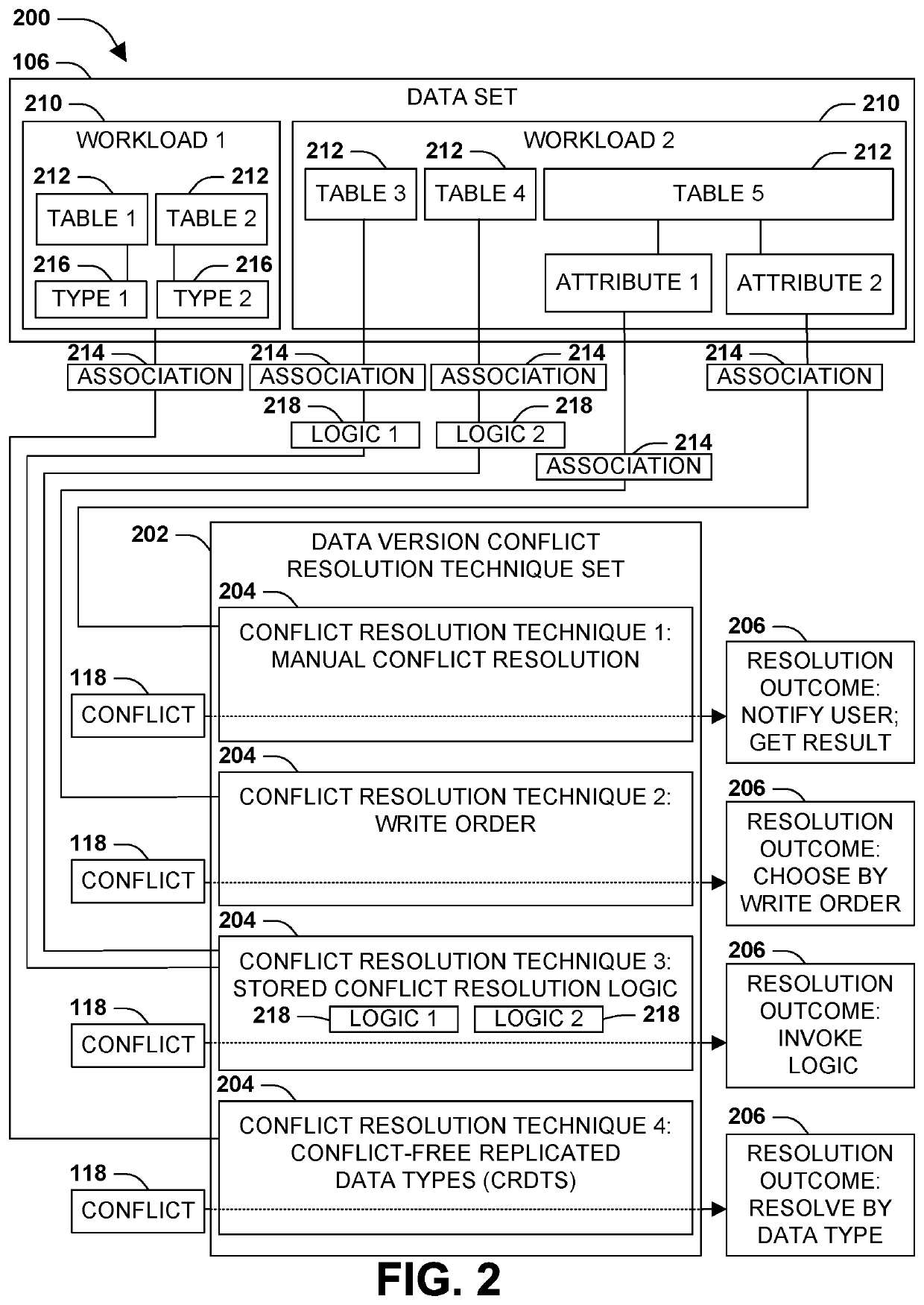Conflict resolution for multi-master distributed databases
- Summary
- Abstract
- Description
- Claims
- Application Information
AI Technical Summary
Benefits of technology
Problems solved by technology
Method used
Image
Examples
Embodiment Construction
[0059]-[0067]E.Variations[0068]-[0143]E1.Scenarios[0070]-[0072]E2.Data Version Conflict Resolution[0073]-[0104]E2A. Manual Conflict Resolution[0080]-[0082]E2B. Write Priority Conflict Resolution[0083]-[0087]E2C. Stored Conflict Resolution Logic[0088]-[0096]E2D. Data Type Conflict Resolution[0097]-[0104]E3.Associations[0105]-[0122]E4.Detecting Data Version Conflicts[0123]-[0130]E5.Resolving Data Version Conflicts[0131]-[0143]F.Example Computing Environment[0144]-[0154]G.Usage of Terms[0155]-[0162]
BACKGROUND
[0003]Within the field of computing, many scenarios involve a distributed data service that processes data on behalf of various workloads. In such scenarios, the workloads are often constrained by a set of performance requirements, such as low latency, high availability, scalability to accommodate surges in demand, and / or consistency guarantees of various types and levels. The performance requirements for respective workloads are often formalized in a service level agreement, where...
PUM
 Login to View More
Login to View More Abstract
Description
Claims
Application Information
 Login to View More
Login to View More - R&D
- Intellectual Property
- Life Sciences
- Materials
- Tech Scout
- Unparalleled Data Quality
- Higher Quality Content
- 60% Fewer Hallucinations
Browse by: Latest US Patents, China's latest patents, Technical Efficacy Thesaurus, Application Domain, Technology Topic, Popular Technical Reports.
© 2025 PatSnap. All rights reserved.Legal|Privacy policy|Modern Slavery Act Transparency Statement|Sitemap|About US| Contact US: help@patsnap.com



